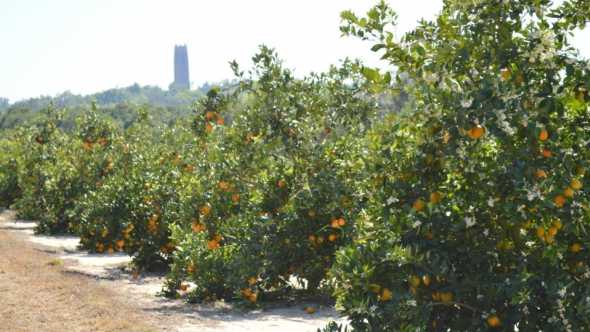HLB-Induced Urgency Spurs Release Of New Citrus Rootstock
With demand at an all-time high from growers for trees sporting any type of resistance to citrus greening, USDA-Agricultural Research Service (ARS) has released the US-1516 rootstock for commercial use in Florida.

Photo courtesy of USDA-ARS USHRL
According to USDA researchers, the major positives of this new rootstock are induction of superior tree health, fruit productivity, and good fruit quality on sweet orange trees grown on the Ridge and infected with the causal agent of HLB.
This rootstock selection originated in 1975 from a cross of African Pummelo (Citrus grandis) x Flying Dragon Trifoliate Orange (Poncirus trifoliata).
Hybrid seed from the cross was planted at the A.H. Whitmore Foundation Farm in Groveland, FL, in 1976 and grown to fruiting. Field testing of US-1516 was planned and conducted by Dr. Kim Bowman, who’s based at the USDA-ARS U.S. Horticultural Research Lab in Ft. Pierce, in collaboration with or support from industry partners, including Florida Citrus Research Foundation, Florida Citrus Production Research Advisory Council, and Florida Citrus Research and Development Foundation.
Field testing of the US-1516 rootstock has been primarily at one location and with Valencia sweet orange scion. The budded trees were transplanted into the trial in June 2008 at a commercial field site in Polk County owned by Wheeler Citrus. The experiment included 21 Valencia trees on each of the 17 rootstocks. In addition to US-1516 rootstock, the trial contained most of the common citrus rootstocks used in Florida.
Of the 357 trees originally planted in the trial, 52 trees were removed because of very poor health (primarily symptoms of HLB). All of the 305 trees that remained in the trial in July 2015 from the original planting tested positive for Candidatus Liberibacter asiaticus, and 304
trees showed visible leaf symptoms of HLB. Compared to other rootstocks in the trial, US-1516 rootstock had the lowest number of trees removed (zero) because of poor health, and the best average tree health rating.
Source plant material for US-1516 has been provided to the Florida Bureau of Citrus Budwood Registration and will be distributed, following USDA release, according to Florida Department of Agriculture and Consumer Services regulations.
Small quantities of seed and plant tissue for research, as well as additional information on US-1516 may be obtained from Kim Bowman.
Genetic material of this release will be deposited in the National Plant Germplasm System where it will be available for research purposes, including development and commercialization of new cultivars.









